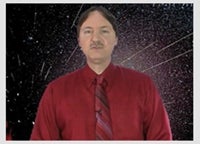
Expand your observing with these tools from Astronomy magazine
- Video: How to observe meteor showers, with Michael E. Bakich, senior editor
- Video: Easy-to-find objects in the 2010/11 winter sky, with Richard Talcott, senior editor
- StarDome: Locate constellation Boötes the Herdsman in your night sky before this meteor shower with our interactive star chart.
- Sign up for our free weekly e-mail newsletter.
Quadrantid facts
* The now-extinct constellation Quadrans Muralis the Mural Quadrant originally sat between the right foot of Hercules, the left hand of Boötes, and Draco. It represented the mural quadrant of French astronomer Jérome Lalande (1732–1807). Lalande used his quadrant to chart some 50,000 stars while at the College de France. French globe-maker J. Fortin introduced Quadrans Muralis as a constellation in his atlas of 1795.
* The Quadrantid meteor shower originated from a near-Earth asteroid named 2003 EH1. Although astronomers classify 2003 EH1 as an asteroid, most believe it to be a dead comet. Observers first recognized the Quadrantids as an annual meteor shower in 1839.
Meteor shower facts
* Meteors are small particles of rock and metal Earth encounters (runs into) during its orbit around the Sun. In space, these particles are “meteoroids.” When they burn up in the atmosphere, they are “meteors.” If they survive the fiery ordeal of passage through our thick blanket of air and land on Earth, they then become “meteorites.”
* No known meteorite has come from a meteor shower — the particles are too small.
Interesting facts about meteors
* To be visible, a meteor must be within about 120 miles (200 kilometers) of an observer.
* Meteors become visible at an average height of 55 miles (90 km). Nearly all burn up before they reach an altitude of 50 miles (80 km).
* The typical bright meteor is produced by a particle with a mass less than 1 gram and is no larger than a pea.
* The hourly rate on a “non-shower” night is approximately 6 meteors per hour.
* A meteoroid enters the atmosphere at velocities between 50,000 and 165,000 mph (81,000 and 265,000 km/h).
The annual Quadrantid meteor shower is one of the year’s best. In 2011, this shower will be especially good because it reaches its peak the evening of January 3, within 8 hours of New Moon. So, not only will you see bright meteors easily, but you’ll also count quite a few fainter “shooting stars.”
Astronomers predict that the Quadrantids will peak around 8 p.m. EST January 3. That time works best for Europe, but North American meteor-watchers should also keep an eye out because predicting meteor showers isn’t an exact science yet. New Moon occurs at 4:03 a.m. EST January 4, so no distracting moonlight will pollute the sky.
You’ll need a clear, dark sky to see more than just a few Quadrantids. “Dark” means at least 40 miles from the lights of a large city. You won’t need a telescope or even binoculars — in fact, the eyes alone work best because they provide the largest field of view.
Astronomy magazine contributing editor Raymond Shubinski, who has observed more than 100 meteor showers, offers an important point: “Comfort counts when observing meteor showers,” Shubinski says. “Most importantly, you must keep warm. Observing is not a physical activity — you’ll just be standing or sitting.”
When you’re ready to start observing, set up a lawn chair, preferably one that reclines. To see the maximum number of meteors, just look overhead. Glancing around won’t hurt anything.
Shubinski advises observers to keep a running tally of meteors. “By doing that,” he says, “you’ll get a good idea of how your site compares with observing sites around the world.”
How many Quadrantids will you see? Most years under clear, moonless conditions, observers count 120 meteors per hour from a dark site. That’s an average of two shooting stars a minute!
The shower’s radiant lies in the northern part of the constellation Boötes the Herdsman, which will lie low in the eastern sky at midnight and overhead at dawn. The Quadrantids got their name from a defunct constellation, Quadrans Muralis the Mural Quadrant, which used to occupy this region of sky.









